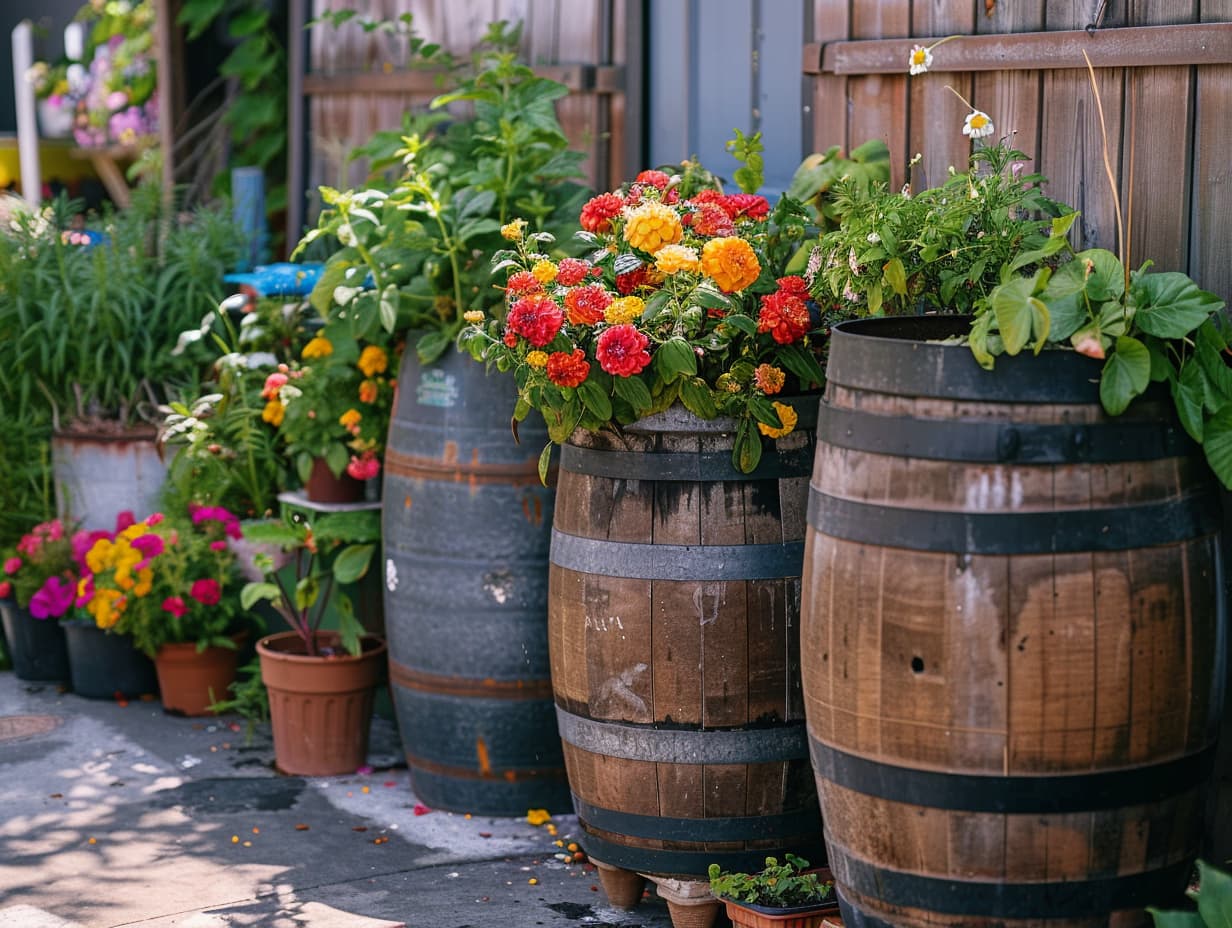When you buy products via links on our website, we might receive an affiliate commission. Learn more
10 Places to Unleash Your Inner Guerrilla Gardener

Guerilla gardening is a thriving movement transforming neglected urban spaces into flourishing ecosystems. Often dubbed “green guerillas,” these passionate individuals strategically plant seeds and cultivate life in unexpected corners, fostering a greener, more vibrant city.
One inspiring example is the Smiling Hogshead Ranch in Queens, New York. What was once a toxic wasteland has been rejuvenated by community volunteers into a diverse ecosystem, demonstrating the transformative power of permaculture principles and collective effort.
If you're looking for ways to enhance your community’s biodiversity and contribute to a more sustainable urban environment, then this guide is for you!
This blog delves into 10 hidden gems ripe for your green thumb, providing actionable tips to transform your city into a vibrant urban oasis, one guerrilla garden at a time.
Transform Street Tree Beds With Flowers

City sidewalks are often lined with barren patches beneath street trees. These underused zones are prime real estate for guerrilla gardeners. Choose low-growing, shade-tolerant flowers or native groundcovers that complement existing trees.
They'll add a splash of color and texture without competing with the tree for resources. Remember, research local regulations to ensure your plantings won't interfere with city maintenance.
Repurpose Abandoned Public Planters With Flower or Climbing Vines

Forgotten planters on sidewalks or neglected building entrances become eyesores. Breathe new life into them by planting a mix of colorful flowers like marigolds and petunias, or cascading vines like clematis or morning glories.
Choose drought-resistant varieties to minimize maintenance needs. Consider using a slow-release fertilizer to ensure your plants thrive throughout the season.
Reclaim Vacant Lots by Planting Vegetables, Herbs and Pollinator Flowers

Vacant lots often become dumping grounds for trash. Transform them into vibrant community gardens by planting vegetables like tomatoes, peppers, and leafy greens, herbs like basil and oregano, and bee-friendly flowers like sunflowers and lavender.
Partner with local residents to maintain the space and create a shared green haven. Organize planting days and seed-sharing events to foster a sense of community ownership.
Beautify Roadside Grassy Strips With Flowers

The grassy strips along roadsides are perfect for introducing native wildflowers. These hardy plants require minimal care, providing vital habitat for pollinators like butterflies and bees while simultaneously reducing erosion.
Research native wildflower mixes suitable for your climate zone to create a low-maintenance and ecologically beneficial display.
Add a Touch of Greenery to Roadside Walls and Fences

Don’t let vertical spaces go to waste! Utilize walls and fences for vertical gardens. Climbing vines like ivy or clematis can add a touch of lush greenery.
Hanging baskets with cascading flowers like petunias or lobelia create a vibrant display.
Get creative! Use repurposed pockets or wall planters for herbs like mint, rosemary, or thyme to add a touch of freshness and functionality.
Make the Most of Discarded Objects to Transform Them Into Planters

Old tires, broken furniture, or even leaky watering cans can be transformed into beautiful planters. Get creative!
Paint them in bright colors, drill drainage holes for excess water, and fill them with vibrant blooms like marigolds, zinnias, or cosmos.
Upcycled planters add a touch of whimsy to unexpected places and promote sustainability by giving discarded objects a new lease on life.
Illuminate Sidewalk Cracks With Low-Growing Succulents or Thyme

Cracked sidewalks are often seen as eyesores. But with a little guerrilla gardening magic, they can become vibrant pathways.
Plant low-growing succulents like stonecrop or hens and chicks, or creeping thyme in the cracks.
These drought-tolerant plants require minimal care and thrive in tight spaces, creating a mosaic of textures and colors that transform the sidewalk into a unique walkway.
Paint Utility Boxes and Use Them as Vibrant Planters

Bland utility boxes can become miniature art installations. Paint them with bright shades and plant a low-growing border of colorful flowers like pansies or violas around the base, creating a visually appealing contrast to the industrial structure.
Consider using drought-tolerant or low-water plants to minimize maintenance needs. Remember to choose plants that won't grow tall enough to obscure any important markings on the utility box.
Plant Container Gardens in Rain Barrels

Rain barrels collect rainwater, a valuable resource for guerrilla gardens. Plant a small container garden on top of the barrel, with herbs like basil, cilantro, or parsley, or vegetables like lettuce or spinach, that thrive on moderate watering.
Utilize recycled containers with drainage holes for the plants, ensuring excess water can drain back into the rain barrel for later use.
Install Planters Along Pedestrian Bridges

Pedestrian bridges can feel sterile and uninviting. Introduce planters along the railings, filled with colorful annuals like impatiens or petunias, or cascading vines like nasturtiums or morning glories.
This will soften the space and create a more welcoming atmosphere for pedestrians.
Choose lightweight containers to ensure they don't overload the bridge's weight capacity. Self-watering planters minimize maintenance needs in these elevated locations.
Guerrilla gardening is a low-cost, high-impact way to make a positive change in your community. Remember to choose native or drought-tolerant plants, plant during the appropriate season, and be mindful of any local regulations.
With a little creativity and a love for greenery, you can transform your city into a vibrant urban oasis, one guerrilla garden at a time.
